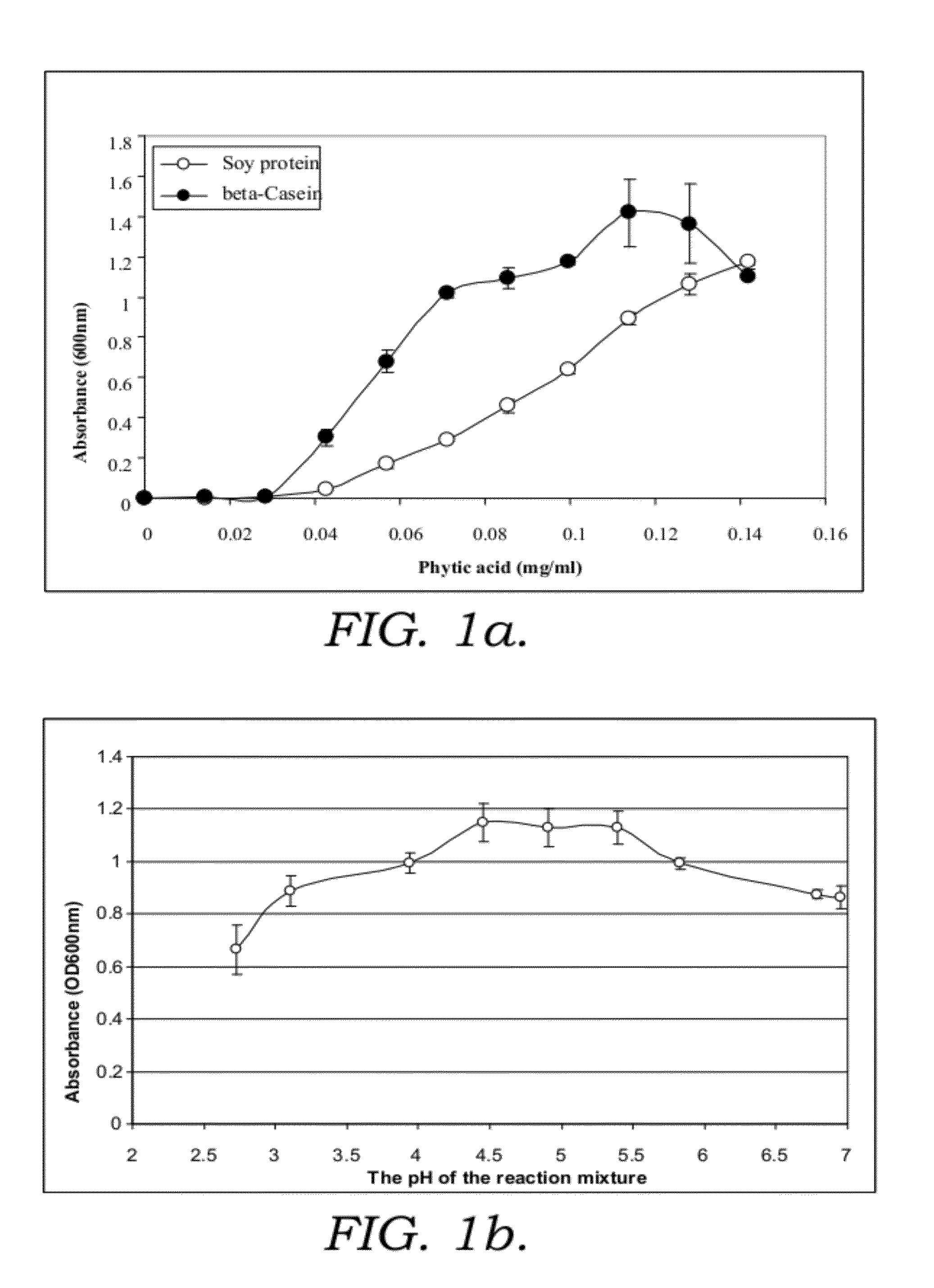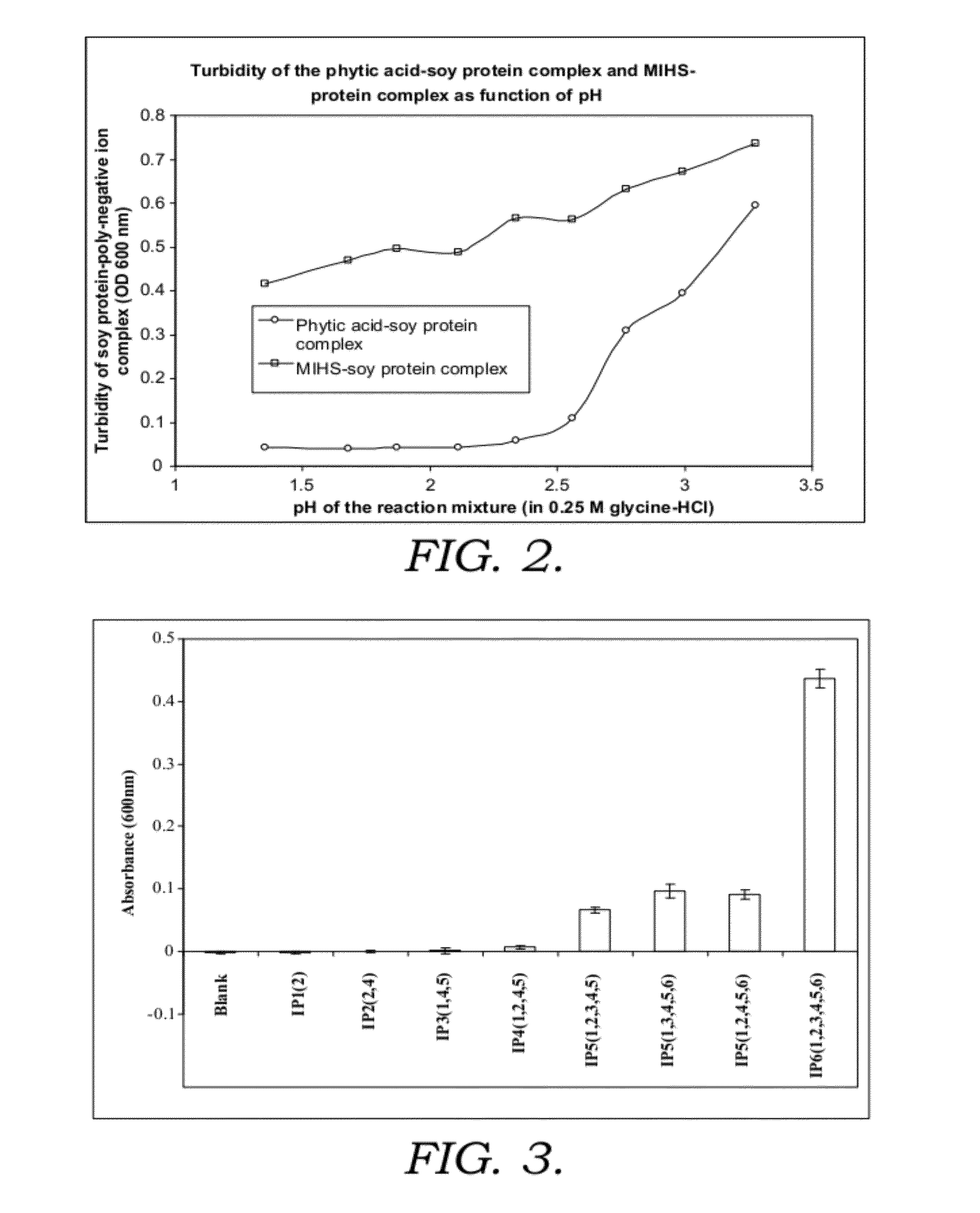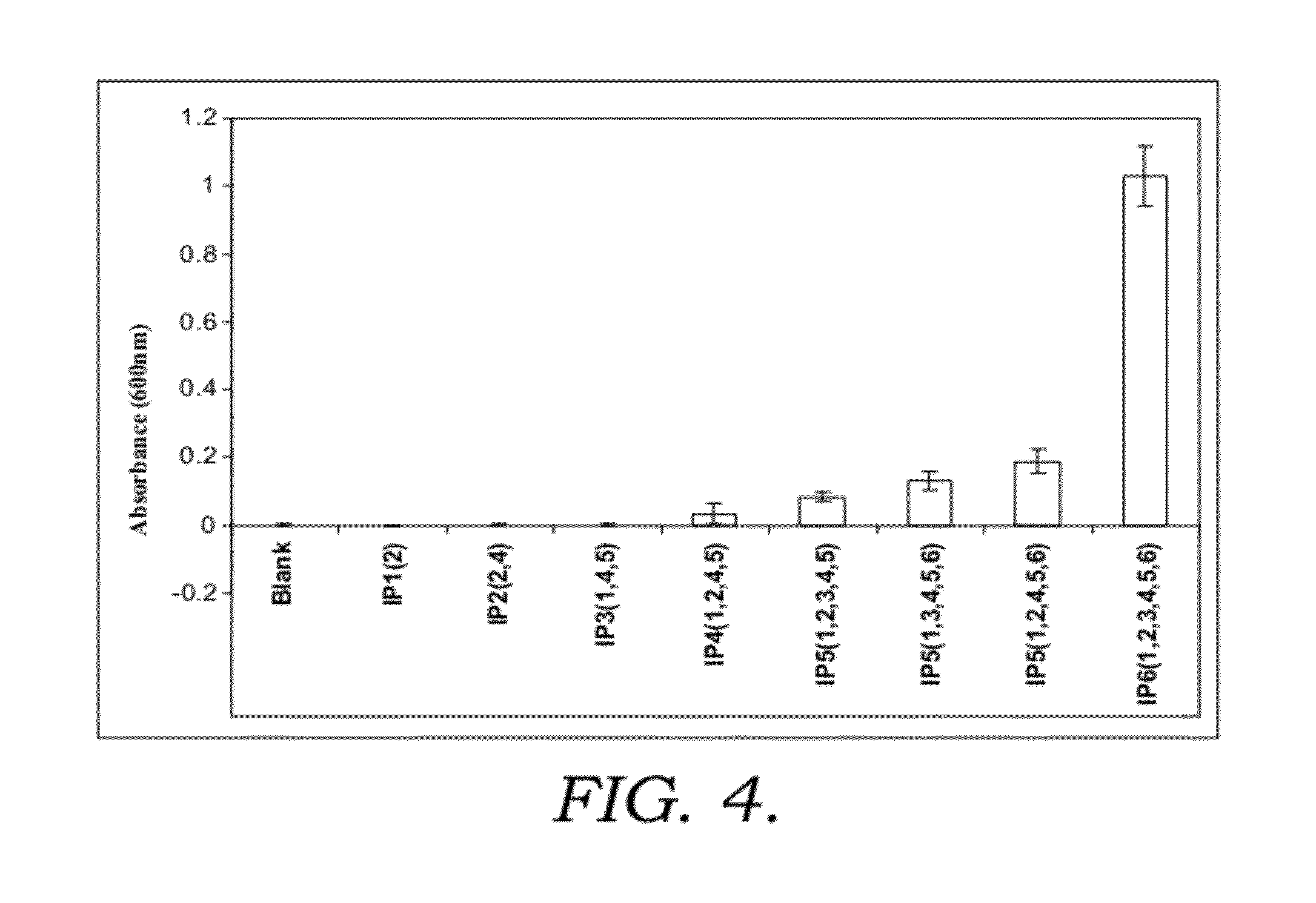Method of detecting phytase activity or protease activity
a phytase activity and protease technology, applied in the field of methods, can solve the problems of difficult kinetic studies of phytase activity, inability to measure the amount of inorganic phosphate after, and inability to perform phytase activity assay methods
- Summary
- Abstract
- Description
- Claims
- Application Information
AI Technical Summary
Benefits of technology
Problems solved by technology
Method used
Image
Examples
examples
Abbreviations
[0214]FTU, phytase activity unit; IP6, phytic acid, sodium phytate; IPx, myo-inositol phosphate esters, where x denotes the number of phosphate ester bonds; Pi, inorganic phosphate.
Example Section
Part A
1. Preparation of Solutions
[0215]1.1. Phytic acid (myo-inositol hexakisphosphate (IP6)), myo-inositol pentakis-, tetrakis-, tris-, bis- and monophosphate solutions, 10 mM prepared in water.
1.2. Inositol sulphates (myo-inositolhexasulphate (MIHS)) solution, 10 mM prepared in water.
1.3. 0.25M glycine-HCl solution (BG, Buffer G) with pH from 1.5 to 4.0.
1.4. Beta casein solution and soy protein solution, were prepared in BG at a concentration of 2 mg / ml. Lysozyme solution was prepared in 0.1M glycine HCl (pH3.0) at 2.5-43 mg / ml.
1.5. Phyzyme XP®, a variant of E. coli phytase.
1.6. Protease P-3000, a variant of subtilisin, a protease from Bacillus subtilis.
1.7. Feed enzyme extract: 5 g feed was mixed with 45 ml water and filtered afterwards through filter paper or a glass fibre...
PUM
| Property | Measurement | Unit |
|---|---|---|
| pH | aaaaa | aaaaa |
| pH | aaaaa | aaaaa |
| concentrations | aaaaa | aaaaa |
Abstract
Description
Claims
Application Information
 Login to View More
Login to View More - R&D
- Intellectual Property
- Life Sciences
- Materials
- Tech Scout
- Unparalleled Data Quality
- Higher Quality Content
- 60% Fewer Hallucinations
Browse by: Latest US Patents, China's latest patents, Technical Efficacy Thesaurus, Application Domain, Technology Topic, Popular Technical Reports.
© 2025 PatSnap. All rights reserved.Legal|Privacy policy|Modern Slavery Act Transparency Statement|Sitemap|About US| Contact US: help@patsnap.com



